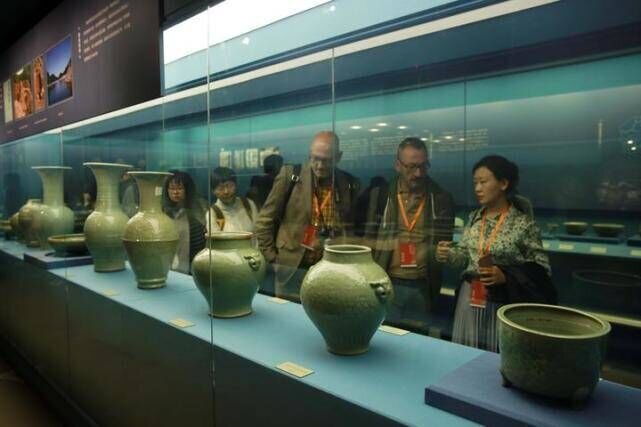Historical celadons loaned to China return home

TEHRAN – A collection of centuries-old celadons - a greenish ceramic glaze that is used on stoneware – has returned home after being showcased at Beijing’s Palace Museum.
[A total of] 14 pieces of celadon vessels, which was on a loan from the National Museum of Iran, have arrived at Imam Khomeini International Airport, director of the museum Jebrael Nokandeh announced on Monday.
Regarding limitations caused by the coronavirus pandemic, he explained: “What made this exhibition different from other similar events was the [special] conditions and limitations caused by the coronavirus spread…., and fortunately all the stages from transferring and reopening the boxed have been carried out in compliance with all relevant [health] instructions.”
Celadon is particularly valued in China, South Korea, Thailand, and Japan.
“The exhibition, which brought together a huge treasure of celadon (vessels) as its common theme on loan from major museums, was a sign of the common, transboundary cultural heritage for all the world, which its results in the lasting friendship of nations through cultural diplomacy,” Nokandeh explained.
“In ancient eras, Iran (Persia) had close and extensive relations with its counterparts and great governments of the time,” the official added.
The loaned Iranian celadons, which belong to a larger Safavid-era (1501–1736) collection, were once endowed to the Sheikh Safi al-Din Khanegah and Shrine Ensemble, by Safavid King, Shah Abbas the Great.
However, they found their way to the National Museum of Iran in the Iranian calendar year 1314 (1925-26. The ensemble is named after Sheikh Safi al-Din Ardabili (1253-1334), who was a Sufi philosopher and leader of Islamic mystic practices.
From the twelfth century to the current age, celadon has been enjoyed by people throughout China and around the world in palace courts and common residences.
AFM/MG
Leave a Comment